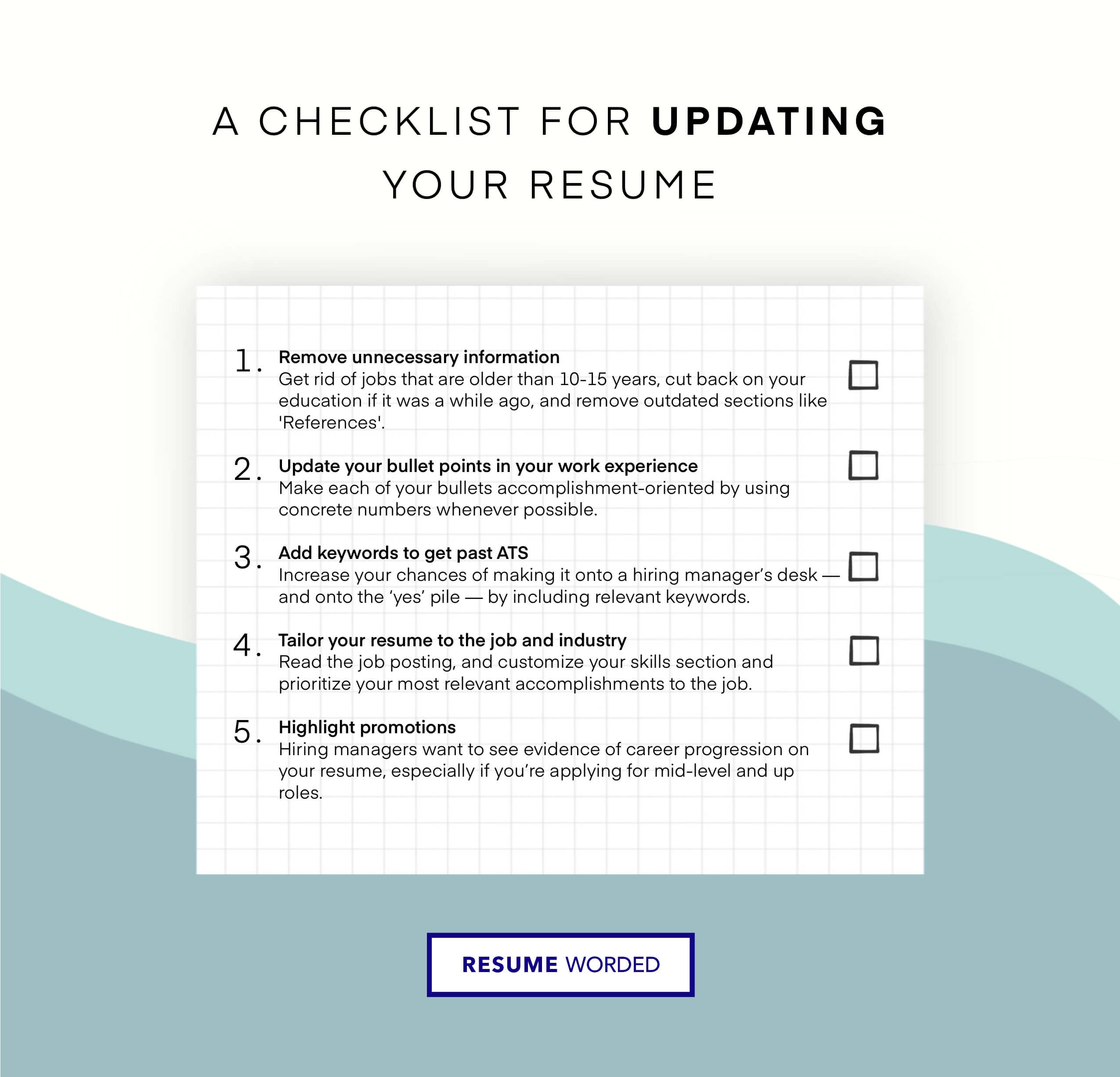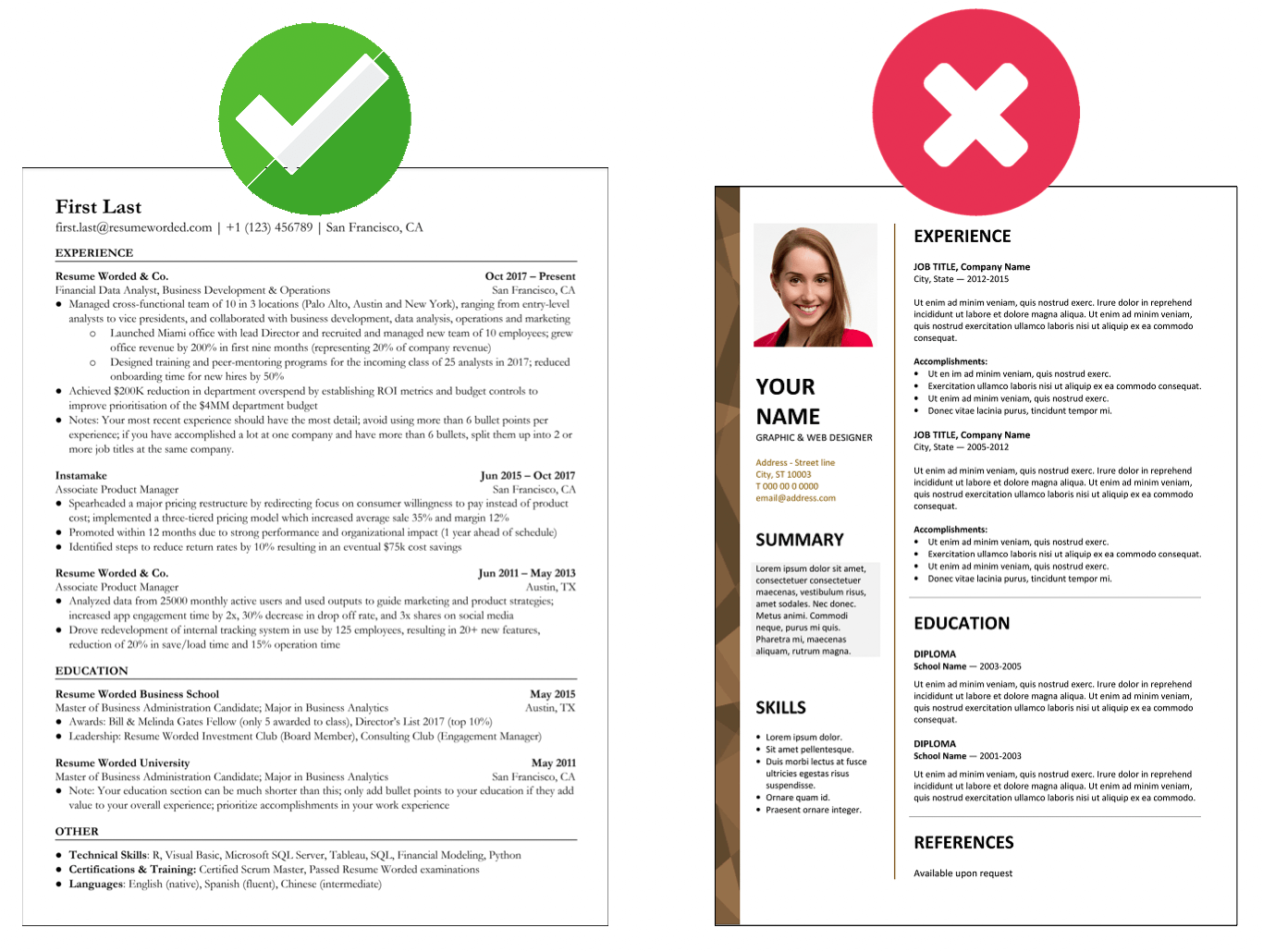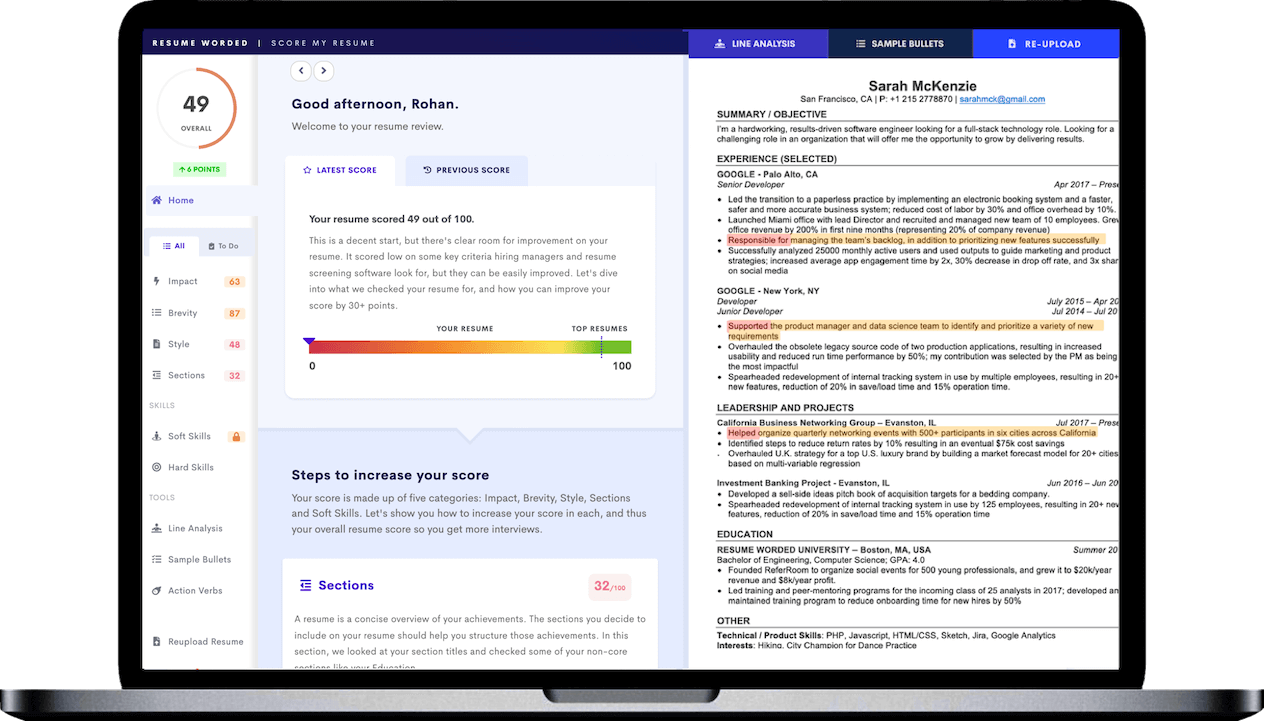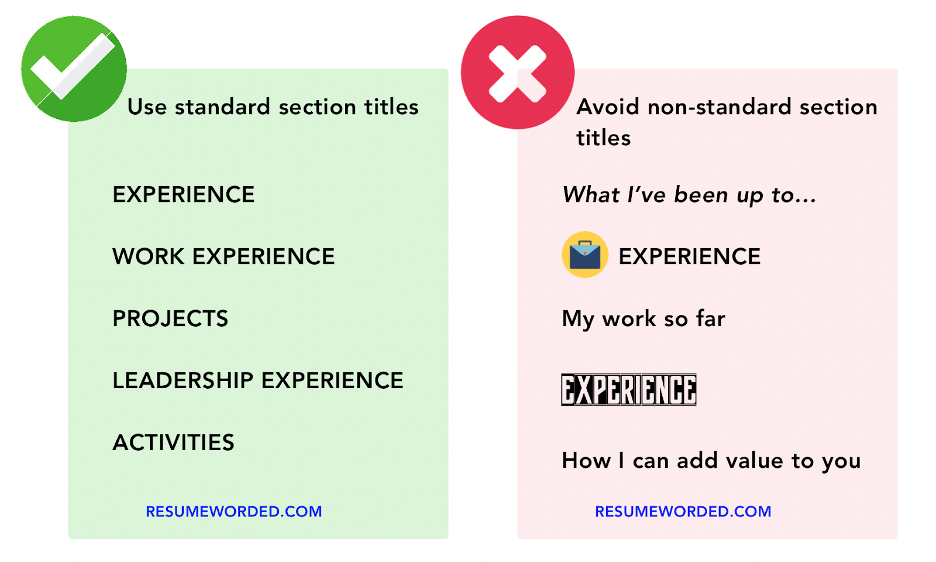Does your life look the same in 2025 as it did a few years ago? Of course not — and neither should your job search.
An outdated resume won’t just prevent you from standing out; it might lead to rejection. In this guide, we’ll explain how resumes have changed in 2025 — and how they haven’t. Stay tuned as we explore the importance of achievements and quantifiable data, the shift from objective statements to professional summaries, the critical role of ATS software, and the preferred format for your 2025 resume.
Why your resume matters more than ever in 2025
Haven’t we evolved past letting resumes define us yet? Sadly, no. (Maybe next year!) Keeping your resume updated is the best way to:
- Stay relevant. A lot of industries are in a period of rapid change right now, which means that a stellar resume from even a couple of years ago may be seriously outdated now. Updating your resume for 2025 means demonstrating that you’ve kept up with industry trends.
- Stand out. On average, 250 resumes are submitted for every corporate job opening (and in some industries, it’s a lot more). Having a resume that stands out is no longer just a way to get ahead of the pack — it’s essential if you even want to stand a chance.
- Make a strong first impression. Unless you already have a foot in the door, your resume is the first — and likely only — thing a potential employer knows about you. Make sure it reflects who you are in 2025 — not who you were in 2019.
If you’re convinced (and you should be), let’s start with the basics — what should a resume even look like in 2025?
The best resume format in 2025
The best resume format to use when job hunting is a reverse chronological resume format. This is the standard resume format you’re probably used to, which lists your most recent experience at the top and works backward from there.
Here’s an example of what an ideal resume should look like in 2025:
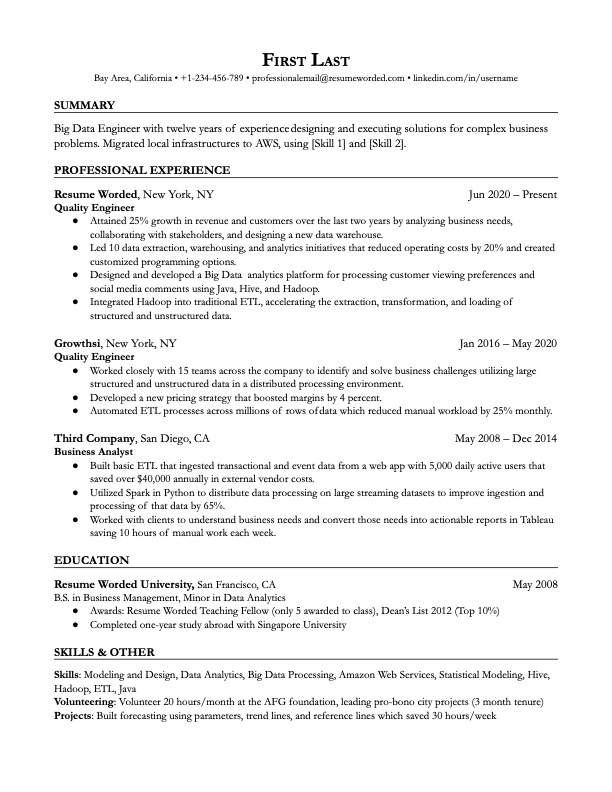
For more resume templates, check out 350+ resume examples for 2025 — you can browse by role type, industry, or experience level.
Must-have sections for your 2025 resume
Let’s break it down — here’s a standard resume format you can use for just about any job.
Contact information
At the very top of your resume, list your full name (this doesn’t have to be your legal name — the name you go by at work is fine), phone number, professional email address, and LinkedIn profile. You can add one or two more things here, like a link to your creative portfolio, GitHub, or blog, but keep it professional.
Professional summary (for senior-level job seekers)
Optional? Yes. Good idea? Also yes – if you're a senior level hire or a career changer! A professional summary can help recruiters get a strong sense of who you are even if they only quickly skim your resume.
Work experience
This is what employers care about the most, so make this section the bulk of your resume. List your most recent role first, followed by any other relevant positions in reverse chronological order. Make sure to include the name of your employer, your job title, the dates you worked, and — most importantly — a handful of strong accomplishments from your time on the job.
Education
At a minimum, include any required or preferred degrees or certifications here. You can list any others that feel relevant, but also feel free to omit anything that isn’t.
Skills
At the very bottom of your resume should be a section for additional information. Usually, this means a list of 10-15 hard skills mentioned in the job description or from our database of industry-specific skills and keywords. You can also include other information here like volunteer work, projects, foreign languages, publications, or additional qualifications.
What to leave off your resume in 2025
That’s really all you need — but is there anything you definitely shouldn’t include? If you haven’t already, it’s time to take off:
- Irrelevant experience. The biggest thing to know about 2025 resumes is that they’re a marketing tool — not a biography. If it doesn’t explain why you’re the right person for this specific job, leave it out.
- Resume objective. The objective statement is out, and the professional summary is in. It’s about what you can bring to the role — not what you want out of it.
- Personal information. If it isn’t listed in the ‘Contact Information’ section above, it probably doesn’t need to be on your resume. Absolutely never include anything that can’t be used in hiring decisions, like your age, race, or marital status.
- Filler. Some corporate buzzwords will never go away, but you can at least banish them from your resume. Look out for generic phrases like “hard worker” or “team player,” adverbs, personal pronouns, and other unnecessary fluff.
If you’re not sure which sections to include in your resume, upload it to the tool below. It will scan your resume and offer personalised suggestions for improvements, helping you identify the must-haves and the areas that can be left off.
The best resume writing tips in 2025
In 2025, resumes aren’t about what — they’re about how. It’s not enough to make your resume look good — here’s how to impress recruiters with real substance.
Quantify your accomplishments
If your resume looks like you just copied and pasted your job description, you’re doing it wrong. Your duties only tell recruiters what your job was supposed to be — what you need is accomplishments that show what you actually did.Remember the cardinal rules of writing resume accomplishments:
- Start with a strong action verb that describes exactly what you did. (If you need an adverb, your action verb isn’t specific enough.)
- Explain the task or project you worked on and what the result was.
- Use concrete numbers.
Too vague: “Managed a marketing campaign.”
Perfect: “Spearheaded a marketing campaign that increased web traffic by 25%.”
Use real examples to illustrate skills
Ever heard of “show, don’t tell?” In this case, it’s about using the details of your achievements to prove that you have the skills and experience hiring managers are looking for.
Anyone can claim to be skilled at something. Want to prove it? Instead of listing “project management” as a skill and expecting that to do the trick (hint: it won’t), go into detail about how you improved efficiency at one job, led a larger team in your next role, and finally increased your current company’s overall project success rate.
Use real metrics like:
- Generating revenue
- Saving money
- Improving efficiency
- Landing clients
- Leading or training a number of employees
- Number or frequency of tasks
- Project success rate
- Customer satisfaction
Customize your resume for every application
Every single application? Afraid so! Customizing your resume for each job application can dramatically increase your chances of making it through to the interview stage. This doesn’t mean you need to rewrite your resume from scratch every time you apply for a new job — even small changes like replacing a couple of less-relevant skills or changing the order of your bullet points to reflect different priorities can make a big difference.
Keep the job description open as you write your resume (or better yet, make your own copy — you never know when you’ll need a quick pre-interview refresher). Highlight any key words or phrases that stand out to you, including skills, experience, and qualifications. And try to use the company’s own language —this will help ensure that you’re flagged as a match, but it also shows that you’re a fit for the company culture, too.
To customize your resume for each application, it is important to include hard skills and keywords relevant to the position you are applying for. Use to the tool below to find the right ones.
Make it skimmable
If you’re up against 200+ other candidates, chances are the hiring manager isn’t doing much more than quickly skimming your resume to see if it’s worth a longer read. You can help speed up the process by:
- Listing your accomplishments in bullet points
- Putting section headings in larger fonts
- Using bold and italics to emphasize company names and job titles
- Leaving plenty of white space
Optimize your resume for ATS
In 2025, nobody should be surprised that AI is helping make hiring decisions — or that it’s pretty good at it. Resume “hacks” like keyword stuffing and white text won’t cut it — instead, it’s about using keywords naturally and contextually throughout your resume.Of course, that doesn’t mean that Applicant Tracking Systems (ATS) are infallible. You can improve your chances by:
- Choosing a common font
- Sticking with plain text instead of images or infographics
- Using standard section headings
- Including the exact job title in your resume
- Using the same language from the job posting (this means making sure key phrases stay intact — not copying and pasting the entire job description with a few tweaks).
Save it as a PDF
This is the smallest but arguably most impactful change you can make to your resume (if you aren’t already doing it). Unless the application instructions explicitly say otherwise, always save your resume in PDF format. This ensures that your formatting stays intact and that your resume will always look exactly the same to a recruiter as it does to you, regardless of what device they’re on or what software they use to open it.

